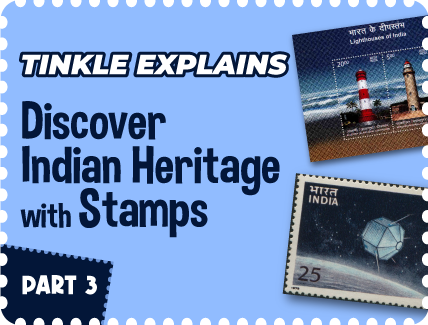

















Do you know about one of the earliest sea navigation methods? The seven stars of the Ursa Major constellation, known as the Saptarshi, visible throughout the year in most of the northern hemisphere, were used for sea navigation. Ancient Indians mastered the art of navigating the sea by using stars for guidance and many other techniques. Let’s learn more about these ancient Indian sea explorers and the various navigation methods used by them.
Have you ever wondered how ships navigated the sea at night before we had the internet, satellites or radio? Light from lighthouses, known as the “Lamp Posts of the Ocean,” was used by them. India has built numerous lighthouses over the course of time to assist explorers and maritime traders. The majestic temple-lighthouse in the ancient port city of Mahabalipuram is India’s oldest lighthouse. It was built by the Pallava rulers on India’s east coast around 600 CE, and a new one was built close by, around 1900 CE. The light source was initially a double-wick coconut oil lamp, which was later upgraded multiple times to finally become the current 2.5 KW grid solar energy. The Alleppey lighthouse, built in 1862 under the authority of Maharaja Rama Varma of Travancore, is the first lighthouse on India’s west coast. At first, fire was set with oil on the roof of the temple-lighthouse each evening to aid sailors in navigating, which has been upgraded to 2KW grid solar energy. These two stamps, with the Alleppey lighthouse (left) and the Mahabalipuram lighthouse (right), were released by India Post in 2012.
Ever wondered what led to the popularity of seafarers in ancient India? It was the development of ancient astronomy, pioneered by astronomers such as Aryabhata. Aryabhata worked on hard mathematical and astronomical problems such as calculating the value of pi, determination of square and cube roots, motions of the solar system, eclipses, heliocentrism*, etc. India’s first artificial satellite, Aryabhata, which was named after him, carried instruments to conduct experiments on astronomy. His calculations on planetary motion using ancient methods remained most accurate until the time of Johannes Kepler in the 17th century, who used modern instruments. India Post issued this commemorative postage stamp on the historic occasion of the launch of the first Indian satellite in 1975.
*the model of the solar system which considers the Sun to be at the centre of the solar system, and the planets to revolve around it
About the writer:
Briti Deb is a storyteller telling stories about everything from the possibilities of ancient astronomy to the deciphering of ancient symbols. He enjoys writing articles, conducting workshops, and exhibiting in museums about heritages that, if preserved, might inspire fresh thinking.
Follow Briti on Twitter: @britideb
Click here for Part 1